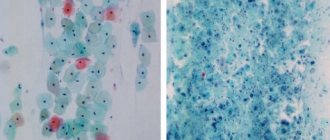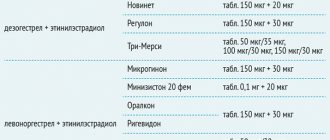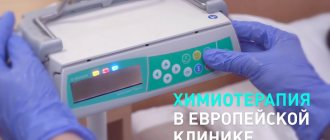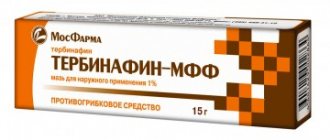Sutent®
Treatment with Sutent® should be carried out under the supervision of a physician experienced in working with anticancer drugs.
At the beginning of each cycle of therapy with Sutent®, a complete analysis of hematological parameters should be performed.
Bleeding
Cases of bleeding, sometimes fatal, have been reported, including gastrointestinal bleeding, respiratory tract bleeding, tumor bleeding, urinary tract bleeding, and cerebral hemorrhage. These phenomena can occur unexpectedly, and in the case of tumor foci in the lungs, manifest in the form of severe or life-threatening hemoptysis or pulmonary hemorrhage.
There have been reports of pulmonary hemorrhage (in some cases fatal) in patients taking sunitinib for renal cell carcinoma, gastrointestinal tumors, or non-small cell lung cancer. Important: Sunitinib is not approved for the treatment of non-small cell lung cancer. It is periodically necessary to conduct a medical examination and evaluate blood counts to early detect the first signs of bleeding and apply the necessary therapeutic measures. During concomitant therapy with anticoagulants, blood clotting parameters should be monitored.
Epistaxis associated with sunitinib therapy was the most common type of bleeding in patients with solid tumors, occurring in 8% of cases. It was observed in half of the cases in patients with hemorrhagic complications.
The cardiovascular system
The relationship between receptor tyrosine kinase (RTK) inhibition and cardiac function has not been studied. It is unknown whether patients who have had a history of cardiovascular events in the last 12 months prior to sunitinib treatment, such as myocardial infarction (including severe/unstable angina), coronary/peripheral bypass grafting, symptomatic congestive heart failure, cerebrovascular events, or transient ischemic events, or pulmonary embolism, are at greater risk of developing treatment-related left ventricular dysfunction. When prescribing Sutent® to this category of patients, the risk/benefit ratio should be carefully assessed.
During therapy with Sutent®, patients should be periodically monitored for clinical signs and symptoms of chronic heart failure (CHF). LVEF is recommended to be assessed before initiation of therapy and periodically during treatment.
If clinical signs of CHF appear, treatment with sunitinib should be discontinued. In the absence of clinical signs of CHF, but with LVEF less than 50% or a decrease in this indicator by more than 20% compared to the initial one (before the start of therapy), it is recommended to reduce the dose of sunitinib or stop taking the drug.
In the post-marketing period, cases of cardiac dysfunction (sometimes fatal), such as heart failure, cardiomyopathy, myocardial ischemia and myocardial infarction, have been reported. Sunitinib should be used with caution in patients at risk of developing these disorders. Based on this information, it is suggested that the use of sunitinib may increase the risk of developing cardiomyopathy. Patients treated with sunitinib had no risk factors for developing cardiomyopathy other than the drug itself.
Vascular disorders
There have been reports of cases of arterial thromboembolism (in some cases fatal) in patients taking Sutent®.
The most common were: cerebrovascular accident, transient ischemic attack and stroke.
Risk factors, in addition to the underlying disease and the patient's age over 65 years, are: arterial hypertension, diabetes mellitus, history of thromboembolic complications.
In clinical studies, the development of venous thromboembolism, including deep vein thrombosis and pulmonary embolism, was noted. With the development of pulmonary embolism, in one case, Sutent® was discontinued, and in several cases a dose reduction or temporary cessation of therapy was required. After resumption of therapy, no further cases of pulmonary embolism were observed in these patients.
Taste disorders
In clinical studies, dysgeusia was observed in 28% of patients receiving therapy with Sutent®.
Prolongation of the QT interval
At concentrations approximately 2 times higher than therapeutic levels, sunitinib promotes prolongation of the QTcF interval (Frederick correction). The clinical significance of this effect is unclear and depends on the risk factors and susceptibility of the individual patient. Sunitinib should be used with caution in patients with a history of QT prolongation, in patients taking antiarrhythmic drugs, or in patients with underlying cardiac disease, bradycardia, or electrolyte disturbances. Caution is required and the dose of sunitinib should be reduced when concomitantly taking strong inhibitors of the CYP3A4 isoenzyme, which may increase the plasma concentration of sunitinib. Before starting therapy and during treatment with Sutent®, ECG monitoring is recommended.
Increased blood pressure
An increase in blood pressure is very often observed in patients receiving therapy with Sutent®.
Patients should be monitored for increased blood pressure using standard monitoring methods. In patients with severe arterial hypertension that is unresponsive to treatment, temporary cessation of therapy with Sutent® is recommended. Therapy is resumed as soon as arterial hypertension is controlled.
Respiratory system disorders
Patients with pulmonary embolism events recorded within 12 months before the start of sunitinib therapy were excluded from clinical studies.
Cases of respiratory dysfunction (eg, dyspnea, pleural effusion, pulmonary embolism, or pulmonary edema) were reported in patients receiving sunitinib in phase 3 registration studies. Approximately 22.2% of patients with solid tumors who received sunitinib therapy experienced pulmonary dysfunction.
Cases of pulmonary embolism were observed in approximately 3.1% of patients with gastrointestinal stromal tumors and in 1.2% of patients with advanced and/or metastatic renal cell carcinoma who received sunitinib therapy in phase 3 clinical trials. No cases of pulmonary embolism were observed in patients with unresectable or metastatic high-grade pancreatic neuroendocrine tumors who received sunitinib in phase 3 clinical trials. Rare cases of death have been observed during post-marketing studies.
Aneurysm and arterial dissection
The use of vascular endothelial growth factor (VEGF) inhibitors in patients with or without hypertension may lead to aneurysm formation and/or arterial dissection. Before initiating therapy with sunitinib, the possible risks should be carefully assessed in patients with risk factors such as hypertension or a history of aneurysm.
Thyroid dysfunction
Monitoring of all patients during sunitinib therapy for the development of thyroid dysfunction is recommended. Patients with signs and/or symptoms of thyroid dysfunction should undergo laboratory monitoring. Baseline laboratory testing of thyroid function is also recommended in patients with hypothyroidism or hyperthyroidism. Patients with hypothyroidism are treated according to standard medical practice before initiating sunitinib therapy.
In post-registration clinical studies, cases of hyperthyroidism were noted, in some cases with subsequent development of hypothyroidism.
Skin and subcutaneous tissues
Patients should be warned that during treatment with Sutent®, a change in skin color may occur due to the presence of a dye (yellow) in the drug. Hair or skin discoloration may also occur. Other possible side effects with sunitinib include dry, thinning or cracking of the skin, blisters, or a local rash on the palms and soles of the hands.
These effects do not tend to spread, are usually reversible and in most cases did not lead to the need to discontinue therapy.
Rare cases of severe skin lesions, such as erythema multiforme, Stevens-Johnson syndrome-like skin lesions, some of which have been fatal, have been reported. Therapy with Sutent should be discontinued if symptoms of Stevens-Johnson syndrome or erythema multiforme develop (for example, progressive skin rash, usually with blistering and damage to the mucous membranes). If the diagnosis of Stevens-Johnson syndrome is confirmed, therapy is not resumed. In some cases, patients with suspected erythema multiforme tolerated resumption of therapy at lower doses after resolution of skin symptoms; some of these patients were simultaneously receiving therapy with glucocorticosteroids or antihistamines.
Lesions of the gastrointestinal tract
In patients with intra-abdominal tumors receiving therapy with Sutent®, serious complications (including gastrointestinal perforation), in some cases with death, were observed.
Nausea, diarrhea, dyspepsia, stomatitis and vomiting may occur when using Sutent®. In such cases, the use of antiemetic or antidiarrheal drugs should be considered as maintenance therapy.
Pancreatitis
In clinical studies with the use of the drug Sutent®, cases of pancreatitis were noted. In patients with various solid tumors receiving therapy with Sutent®, an increase in lipase and amylase activity in the blood plasma was observed. Increases in lipase activity were transient and were generally not accompanied by symptoms of pancreatitis. During treatment with Sutent®, it is necessary to periodically check the activity of lipase and amylase in the blood serum. If symptoms of pancreatitis are present or appear, treatment with Sutent should be discontinued and appropriate therapy administered.
Convulsions
Seizures (sometimes fatal) have been reported in patients with radiological evidence of brain metastases or posterior reversible leukoencephalopathy syndrome.
Patients with brain metastases, a history of seizures, and/or signs/symptoms of reversible posterior leukoencephalopathy, such as increased blood pressure, headache, lethargy, cognitive impairment, visual loss, including cortical blindness, should be monitored with standard methods, including blood pressure monitoring. pressure. If these symptoms appear during therapy, it is recommended to temporarily stop taking Sutent®. After the symptoms disappear, treatment can be resumed at the discretion of the attending physician.
Thrombotic microangiopathy
Cases of TMA, including thrombotic thrombocytopenic purpura and hemolytic uremic syndrome, sometimes leading to renal failure or death, have been reported in clinical trials and post-marketing use of sunitinib alone and in combination with bevacizumab. If a patient develops TMA, sunitinib should be discontinued. After cessation of treatment, the symptoms of TMA disappeared.
Proteinuria
There are reports of the development of proteinuria or nephrotic syndrome during therapy with sunitinib.
A baseline study of renal function prior to initiation of treatment is recommended, as is monitoring of renal function parameters during sunitinib therapy. The safety of sunitinib in patients with moderate to severe proteinuria has not been assessed. In patients with nephrotic syndrome, treatment with sunitinib should be discontinued.
Hypoglycemia
During sunitinib therapy, some patients experienced a decrease in blood glucose concentrations. In some cases, such changes were accompanied by clinical symptoms. Blood glucose concentrations in patients with diabetes mellitus should be regularly monitored and, if necessary, the dose of hypoglycemic drugs should be adjusted.
Hepatotoxicity
Cases of liver failure, sometimes fatal, have been reported during sunitinib therapy. Liver enzymes (alanine aminotransferase, aspartate aminotransferase, bilirubin concentration) should be monitored before initiating sunitinib therapy, during each cycle of therapy, and when clinically indicated. If grade 3 or 4 side effects on liver function develop, you should stop taking the drug. If symptoms of hepatotoxicity do not resolve, the drug should be discontinued.
Hematological disorders
There are reports of a decrease in the number of neutrophils and platelets during the use of sunitinib. The listed cases are not cumulative; they were usually reversible and did not lead to discontinuation of therapy. In some cases, fatal bleeding was observed in combination with thrombocytopenia.
In patients receiving treatment with Sutent®, a complete blood count should be performed before each cycle of therapy.
Tumor lysis syndrome
Patients with large tumor burdens (before initiating treatment with sunitinib) should be closely monitored as they are at greatest risk of developing tumor lysis syndrome.
Infections and infestations
Cases of serious infections (including those due to neutropenia), some of which were fatal, have been reported. Infections that develop during the use of sunitinib are common in cancer patients, for example, respiratory infections (pneumonia, bronchitis), urinary tract infections, skin infections (for example, inflammation of the subcutaneous fat), sepsis. Often infections can be bacterial, viral or fungal in nature.
Necrotizing fasciitis
There are reports of rare cases of necrotizing fasciitis, including the perineum, in some cases with a fatal outcome. If this adverse event occurs, sunitinib should be discontinued and appropriate treatment should be prescribed.
Surgical interventions
Cases of delayed wound healing have been reported with the use of Sutent®. If extensive surgery is necessary, a temporary suspension of the drug is recommended. There are limited data on the time after surgery after which therapy can be resumed. Therefore, the decision to restart therapy should be based on an assessment of the wound after surgery.
Osteonecrosis of the jaw
Cases of osteonecrosis of the jaw have been reported with the use of sunitinib. Most of the cases were observed in patients receiving intravenous bisphosphonates, the use of which is a risk factor for the development of osteonecrosis of the jaw. Caution should be exercised when using sunitinib and intravenous bisphosphonates simultaneously.
In addition, invasive procedures for oral diseases are also risk factors for the development of osteonecrosis of the jaw. A dental examination of the patient should be performed before initiating sunitinib therapy.
In patients taking sunitinib who have previously received intravenous bisphosphonate therapy, invasive oral procedures should be avoided if possible.
Composition and release form
| Capsules | 1 caps. |
| active substance: | |
| sunitinib malate | 16.7 mg |
| 33.4 mg | |
| 66.8 mg | |
| corresponds to 12.5; 25 or 50 mg sunitinib | |
| excipients: mannitol; croscarmellose sodium; povidone; magnesium stearate | |
| capsule shell composition: gelatin; titanium dioxide; iron oxide red; capsules of 25 and 50 mg additionally contain iron oxide yellow and iron oxide black | |
| ink composition: shellac; povidone; titanium dioxide |
in PE bottles of 28 or 30 pcs.; 1 bottle in a cardboard pack or 7 pcs in a blister; There are 4 blisters in a cardboard pack.
Pharmacodynamics
Sunitinib is able to simultaneously inhibit the receptors of various tyrosine kinases (RTKs) involved in the processes of tumor growth, pathological angiogenesis and the formation of metastases. Shows inhibitory activity against many kinases (>80 kinases). It has been shown to be a potent inhibitor of platelet-derived growth factor receptors (PDGFRα and PDGFRβ), vascular endothelial growth factor receptors (VEGRF1, VEGRF2 and VEGRF3); stem cell factor receptor (KIT), Fms-like tyrosine kinase-3 receptor (FLT), colony-stimulating factor receptor and glial neurotrophic factor receptor (RET). The activity of the main metabolite was similar to that of sunitinib.
Sunitinib inhibits phosphorylation of multiple RTKs (PDGFRβ, VEGRF2 and KIT) in tumor xenografts expressing target RTKs in vivo
, and demonstrates suppression of tumor growth or regression and/or suppression of metastases in experimental models of various tumors.
Sunitinib has demonstrated the ability to inhibit the growth of tumor cells expressing deregulated target PTKs (PDGFR, RET or KIT) in vitro
, and PDGRFβ- and VEGRF2-dependent angiogenesis
in vivo
.
Side effects
The most important serious adverse events associated with treatment with Sutent® are: pulmonary embolism (1%), thrombocytopenia (1%), tumor bleeding (0.9%), febrile neutropenia (0.4%) and hypertension (0). ,4%).
Venous thromboembolism was described in 2% of cases in patients with metastatic renal cell carcinoma: pulmonary embolism (grade 4) in 2 patients and deep vein thrombosis (grade 3) in 2 patients. In patients with gastrointestinal stromal tumors treated with sunitinib, venous thromboembolism was observed in 7 patients (3%). 5 of 7 people had grade 3 deep vein thrombosis, and 2 patients had grade 1 or 2 deep vein thrombosis.
The most common side effects of all grades associated with treatment with Sutent® (reported in more than 20% of patients) were fatigue, gastrointestinal disorders such as diarrhea, nausea, stomatitis, dyspepsia and vomiting, as well as skin pigmentation disorders; rash; palmoplantar erythrodysesthesia syndrome; dry skin; change in hair color; inflammation of the mucous membranes; asthenia, taste disturbance and anorexia. In patients with solid tumors, the most common treatment-related adverse events were fatigue, hypertension and neutropenia, up to grade 3, and increased lipase, up to grade 4.
Adverse events associated with sunitinib treatment observed in clinical trials in at least >5% of patients with solid tumors are listed below and organized by system organ class, frequency and severity. Within each group, side effects are arranged in decreasing order of severity. Frequency: very often - ≥1/10, often - from ≥1/100 to <1/10; uncommon - from ≥1/1000 to <1/100; rarely - from ≥1/10000 to <1/1000; very rarely - ≤1/10000.
From the hematopoietic organs:
very often - anemia, neutropenia, thrombocytopenia; often - leukopenia.
From the digestive organs:
very often - taste perversion, diarrhea, nausea, vomiting, stomatitis, mucositis, dyspepsia, abdominal pain; anorexia, constipation, glossodynia (neuralgia of the tongue), flatulence, dry mouth; often - pain in the mouth, gastroesophageal reflux; uncommon - pancreatitis; rarely - gastrointestinal perforation.
From the skin and skin appendages:
very often - change in skin color, palmar-plantar syndrome (erythrodysesthesia), rash (erythematous, macular, papular, pityriasis-like, generalized, psoriasis-like), blisters; change in hair color, dry skin, erythema; often - alopecia, peeling of the skin, itching, exfoliative dermatitis.
From the musculoskeletal system:
often - pain in the limbs, arthralgia, myalgia.
From the nervous system:
very often - headache; often - dizziness, paresthesia, insomnia or increased drowsiness, depression.
From the SSS side:
very often - increased blood pressure; often - decreased left ventricular ejection fraction (LVEF), venous thromboembolism (pulmonary embolism, deep vein thrombosis); uncommon - heart failure, congestive heart failure, impaired left ventricular function, rare - prolongation of the QT interval, atrial fibrillation and pirouette-type atrial flutter.
From the urinary system:
often - chromaturia (change in urine color).
From the respiratory system:
very often - nosebleeds; often - shortness of breath, laryngopharyngeal pain.
From the endocrine system:
often - hypothyroidism, increased levels of thyroid-stimulating hormone.
Other:
very often - asthenia/fatigue; increased serum lipase levels; often - lacrimation, weight loss, flu, fever, chills, peripheral edema, periorbital edema, dehydration, hypothyroidism, increased levels of creatine phosphokinase and amylase in the blood serum; infrequently - bleeding from tumors, influenza-like syndrome. Cases of seizures have been described in patients with brain metastases or reversible leukoencephalopathy syndrome.
Post-marketing study results
The following adverse events were recorded during the use of sunitinib after its registration.
From the hematopoietic organs:
Rare cases of thrombotic microangiopathy have been reported. In such cases, it is recommended to temporarily stop taking sunitinib; After symptoms resolve, the drug may be resumed at the discretion of the attending physician.
From the respiratory system:
Cases of pulmonary embolism, sometimes fatal, have been reported.
From the endocrine system:
In clinical studies and during post-marketing use of the drug, rare cases of hyperthyroidism with transition to hypothyroidism were recorded.
From the immune system:
Hypersensitivity reactions, including angioedema, have been reported.
Infections and infestations:
cases of serious infections (with or without neutropenia), some of which were fatal, have been reported.
From the musculoskeletal system:
There are reports of rare cases of myopathy and/or rhabdomyolysis in combination or without combination with acute renal failure, with rare cases of death. The majority of these patients had underlying risk factors and/or received concomitant therapy with drugs that are prone to adverse reactions of this kind.
There have been case reports of fistula formation, sometimes associated with necrosis and/or tumor regression, some of which were fatal.
From the nervous system:
There are reports of cases of taste sensitivity disorders, including ageusia.
From the urinary system:
There have been reports of cases of renal dysfunction/renal failure, some of which were fatal. Cases of proteinuria and rare cases of nephrotic syndrome have been reported.
From the SSS side:
Cases of cardiomyopathy have been reported, some of which have been fatal.
Pharmacokinetics
Sunitinib is well absorbed when taken orally. Tmax is 6–12 hours. Food intake does not affect the bioavailability of sunitinib.
Plasma protein binding of sunitinib and its major metabolite was 95 and 90%, respectively, with no apparent concentration dependence between 100 and 4000 ng/mL. The calculated Vd in tissues (Vd/F) was 2230 l.
Metabolized mainly by the CYP3A4 isoenzyme of cytochrome P450 to form the main active metabolite, which is further metabolized by the same CYP3A4 isoenzyme. The proportion of the active metabolite is 23–37% of the AUC value.
Sunitinib is excreted primarily in feces (61%); Approximately 16% of the administered dose is excreted through the kidneys in the form of unchanged drug and its metabolites. The total clearance when taken orally reaches 34–62 l/h.
After a single oral dose to healthy volunteers, T1/2 of sunitinib and its main active metabolite is 40–60 and 80–110 hours, respectively. With repeated daily use, there is a 3-4-fold accumulation of sunitinib and a 7-10-fold accumulation of its main metabolite. Css of sunitinib and its main active metabolite are achieved after 10–14 days. By day 14, the total plasma concentration of sunitinib and its main active metabolite is 62.9–101 ng/ml. With repeated daily use or repeated cycles with different dosing regimens, no significant changes in the pharmacokinetics of sunitinib and its main active metabolite were observed.
Age, weight, creatinine Cl, race, gender or quality of life assessment (according to the Eastern Cooperative Oncology Group classification, ECOG scale) do not have a clinically significant effect on the pharmacokinetics of the drug and its active metabolite.
Body weight and quality of life:
A population pharmacokinetic analysis showed that there is no need to adjust the initial dose of the drug depending on body weight and quality of life according to the ECOG scale.
Floor:
Available data indicate that the apparent clearance of sunitinib may be 30% lower in women than in men, but this difference does not require adjustment of the initial dose of sunitinib.
Drug interactions
Drugs that increase plasma concentrations of sunitinib.
Co-administration of a single dose of sunitinib with the CYP3A4 isoenzyme inhibitor ketoconazole increases the Cmax and AUC0–∞ of the sunitinib complex, the main active metabolite, in healthy volunteers by 49 and 51%, respectively. The use of Sutent® in combination with other inhibitors of the CYP3A4 isoenzyme (for example, ritonavir, itraconazole, erythromycin, clarithromycin or grapefruit juice) may lead to increased concentrations of sunitinib.
Co-administration of CYP3A4 isoenzyme inhibitors with Sutent should be avoided or an alternative drug with minimal ability to inhibit the CYP3A4 isoenzyme should be selected. If this is not possible, the daily dose of sunitinib may need to be reduced by 12.5 mg. In this case, the daily dose should be at least 37.5 mg.
Drugs that reduce the plasma concentration of sunitinib.
Co-administration of a single dose of sunitinib with the CYP3A4 isoenzyme inducer rifampin reduces Cmax and AUC0–∞y in healthy volunteers by 23 and 46%, respectively.
The use of Sutent® in combination with other inducers of the CYP3A4 isoenzyme (for example, dexamethasone, phenytoin, carbamazepine, rifampin, phenobarbital or St. John's wort) may lead to a decrease in the concentration of sunitinib.
Co-administration of inducers of the CYP3A4 isoenzyme with Sutent® should be avoided or an alternative drug with minimal ability to induce the CYP3A4 isoenzyme should be chosen. If this is not possible, the dose of sunitinib may need to be increased by 12.5 mg while monitoring patient tolerance. The daily dose in this case should not exceed 87.5 mg.
Directions for use and doses
Inside,
regardless of food intake.
The recommended dose of Sutent® is 50 mg per day for 4 weeks, followed by a break of 2 weeks (4/2 regimen). The full cycle of therapy is therefore 6 weeks.
If a dose is missed, do not make up for the missed dose. The patient should take the usual prescribed dose of the drug the next day.
Depending on individual tolerability and safety, the dose of Sutent® can be reduced or increased by 12.5 mg.
The daily dose should be no more than 87.5, but not less than 37.5 mg.
Use in children:
The effectiveness and safety of Sutent® in children has not been established.
Use in elderly patients:
no dose adjustment is required.
Use in patients with liver dysfunction:
if the levels of AST and/or ALT increase by less than 2.5 times the ULN, or if these indicators increase due to the underlying disease by less than 5 times, no dose adjustment is required.
Use in patients with impaired renal function:
When serum creatinine levels increase to less than 2 times the ULN, no dose adjustment is required.
Description of the dosage form
12.5 mg capsule:
hard gelatin, with a red-brown cap and base, “Pfizer” is printed on the cap, and “STN 12.5 mg” is printed on the body.
25 mg capsule:
hard gelatin, with a brownish-orange cap and a red-brown base, printed on the cap “Pfizer” and “STN 25 mg” on the body.
50 mg capsule:
hard gelatin, light brownish-orange in color, printed “Pfizer” on the cap and “STN 50 mg” printed on the body.
The inscription on the capsule of any dosage is written in white ink.
Capsule contents:
yellow to orange granules.
Synonyms of nosological groups
Category ICD-10 Synonyms of diseases according to ICD-10
| C26 Malignant neoplasm of other and ill-defined digestive organs | Intestinal adenocarcinoma |
| Argentaffinoma | |
| Carcinoid | |
| Carcinoid tumor of the gastrointestinal tract | |
| Cancer of other parts of the colon | |
| Gastrointestinal cancer | |
| Bowel cancer | |
| Colon cancer | |
| Colon cancer | |
| Enterochromaffinoma | |
| C64 Malignant neoplasm of the kidney, other than the renal pelvis | Adenomyosarcoma |
| Adenomyocystosarcoma | |
| Adenosarcoma of the kidney | |
| Wilms tumor | |
| Wilms tumor | |
| Metastatic renal cell carcinoma | |
| Metastatic kidney carcinomas | |
| Metastatic renal cell carcinoma | |
| Inoperable kidney carcinomas | |
| Nephroblastoma | |
| Nephroma | |
| Embryonic nephroma | |
| Kidney tumors | |
| Birch-Hirschfeld tumor | |
| Wilms tumor | |
| Renal carcinoma | |
| Kidney cancer | |
| Kidney cancer | |
| Advanced renal cell carcinoma | |
| Advanced renal cell carcinoma | |
| Recurrent kidney carcinomas | |
| C79.0 Secondary malignant neoplasm of the kidney and renal pelvis | Metastatic renal cell carcinoma |
| Metastatic kidney carcinomas | |
| Metastatic renal cell carcinoma |
Contraindications
hypersensitivity to sunitinib or other components of the drug;
pregnancy and lactation;
children's age (the effectiveness and safety of the drug Sutent® in children has not been established).
Carefully
should be used in patients with a history of QT prolongation; in patients taking antiarrhythmic drugs or patients with related heart disease, bradycardia or electrolyte imbalance, as well as renal or hepatic insufficiency. Caution is required and the dose of sunitinib should be reduced while taking strong inhibitors of the CYP3A4 isoenzyme, which may increase the plasma concentration of sunitinib.







